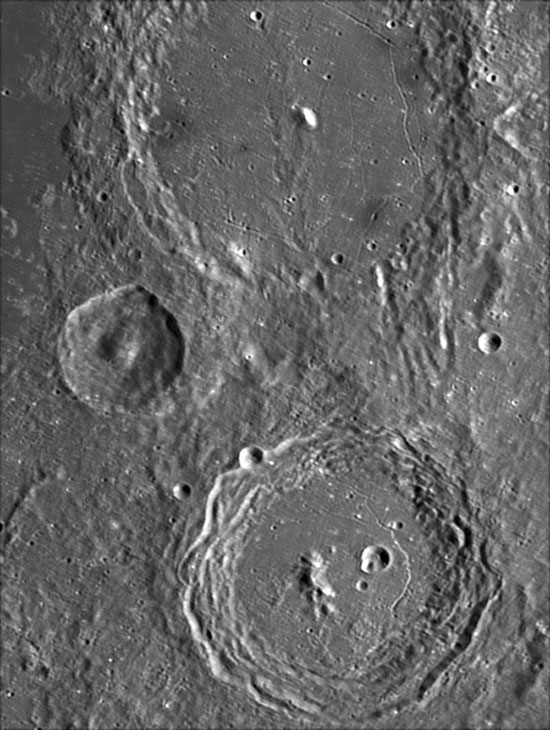Lighting Tales
Originally published February 26, 2010

|
image by Israel Tejera Falcón, Vecindario, Las Palmas (Canary islands), Spain
This gray tones of this image remind me of the hues of the nearly 100 year old Paris Atlas prints. But I doubt that those photographers ever dreamed that a lunar image could be this good. In this, his first submission to LPOD, Israel demonstrates the value of high resolution, high Sun imaging. The floor features of Alphonsus and Arzachel are well known from lower illumnation views, and here when the Sun is higher in the sky, some of the remaining details become visible. For example, the largest crater, A, on the floor of Arzachel has an off-center peak on its floor that generally isn't visible because of shadowing. This lighting also makes me wonder about the 3-5 crater-long chain at the 5 o'clock position on the rim of Alphonsus. It looks like the chain - secondaries from the formation of the Imbrium Basin - originally may have continued northward, but is now covered by the smooth material on the crater's floor. If that is true, then the floor material was emplaced after the Imbrium sculpture. Of course, it may simply have been only a few minutes later, a slower surge of fluidized debris.
Chuck Wood
Technical Details
2/24/10 UT:0:35. Celestron CPC XLT 11" + Barlow X4 TAL + Lumenera Skynyx 2-0M; 2,500 Frames
Related Links
Rükl plates 44 & 55
|
Yesterday's LPOD: A Bulbous Slot
Tomorrow's LPOD: Overflowing the Hole?
Register, Log in,
and join in the comments.




